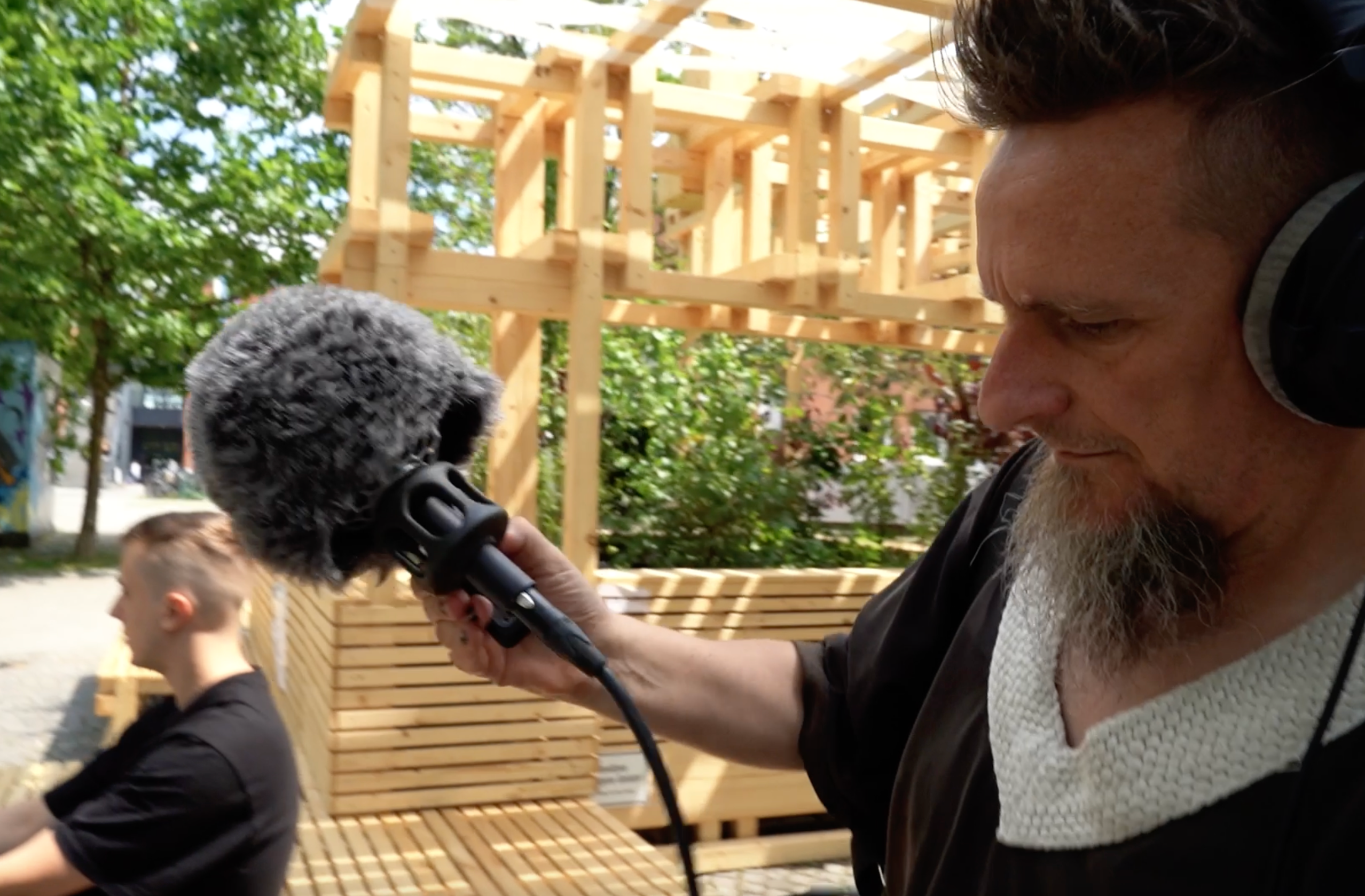NEBourhoods Sounds

How does our environment change when we just close our eyes for a moment? Tune out the obvious and let the unheard-of enter our heads?
The NEBourhoods sounds are acoustic explorations of Neuperlach, recorded and compiled by musician and composer Jürgen Reiter. They are sounds from places to which Neuperlach residents have taken him or that he discovered by chance. Places where NEBourhoods ideas were implemented. Also, places where they ultimately failed to take root. Places that visually characterise Neuperlach, where conscious listening is not so easy. And places where people rarely stop because there is nothing to see.
In the course of this exploration, a few people from the project talk about the ideas they worked on in Neuperlach, where and how these have now taken shape in the neighborhood and what will happen to them after the project ends.
You can find the entire album here.
We hope you enjoy listening to it!
Albert-Schweitzer-Straße 68: Hortus di Monaco
Track 1
The green strip on an underground car park where the Hortus di Monaco neighborhood garden is being created. In summer, when the first raised beds had just been built.
On Feichtstraße
Track 2
A street that leads out of the Ostpark to a residential enclave between two large parking lots. A new garden has been created here, as well.
At the Sudermann Centre
Track 3
In front of the district office. What would it sound like if an urban garden landscape were to be created here after all?
Growing a Tasty Neuperlach: Magdalena Engl and Andreas Obermeier
Track 4
Growing a Tasty Neuperlach: Magdalena Engl and Andreas Obermeier
Track 4
The Green City team explains what was created through the Tasty Neuperlach living lab. How does climate-friendly nutrition actually work, from planting a garden to plant-based cooking? All about hexagonal beds and Neuperlach garden landscapes, wild herbs and the Wohnring tuber, cooking and eating everywhere and together.
Albert-Schweitzer-Straße 68: Shading architecture
Track 5
A break on the bench in the Shading Architecture of the Hortus di Monaco.
Shade and Energy: Sebastian Clark Koth
Track 6
Sebastian from the Technical University of Munich explains what has emerged from the Shade and Energy Living Lab in Neuperlach. How do we want to deal with the increasing heat in our cities? Especially in places where we can't plant trees? About heat islands and the people who suffer most from them. About protection from the sun and the utilisation of its energy.
Theodor-Heuss-Platz: MakerSpace
Track 7
A summertime break at the Sternbrunnen, where the MakerSpace once stood.
Karl-Marx-Ring near Peschelanger
Track 8
At the Steini - a Mobility Meeting Spot for repairing things and hanging out.
Therese-Giese-Allee/Pretorius Allee
Track 9
At the Resi - Mobility Meeting Spot for repairs and lending.
Mobility Meeting Spot: Matti Drechsel
Track 10
Matti of the TU Munich explains what has been created through the Mobility Meeting Spot Living Lab in Neuperlach. What should meeting spots offer in order to induce people to ride their bikes or to go places on foot? And how do we figure out where in the neighbourhood they should be created? About the unusual methods of communal searching and finding, about the importance of sitting for mobility and how you can borrow a bike from a library.
Theodor-Heuss-Platz: NEBourhoods Pavilion
Track 11
On the veranda of the pavilion, between two interview appointments
Charles-de-Gaulle-Platz: Nesting Stool
Track 13
Charles-de-Gaulle-Platz: Nesting Stool
Track 13
A seating sculpture on the path leading from the PEP shopping center into the Wohnring.
Gerhart-Hauptmann-Ring 15: CHILLspORT
Track 14
On the forecourt of the Gerhart-Hauptmann-Mittelschule, which has been transformed into a place to chill out and work out.
At the Schumacherring
Track 15
Because there was a free parking space, and then there was a lot to hear.
From the Nesting Stool through the PEP to the U-Bahn
Track 17
A path that most people in Neuperlach have probably already taken.
Ecolopes: Fabio Sweet
Track 18
Fabio from the Technical University of Munich talks about what has come out of the Ecolopes living lab in Neuperlach. How can we bring people and nature in the city closer together again? By wrapping our residential buildings in a second living facade made of plants, animals and microorganisms. So that the quality of life is right for all.
Picture credit: Stephanie Maier